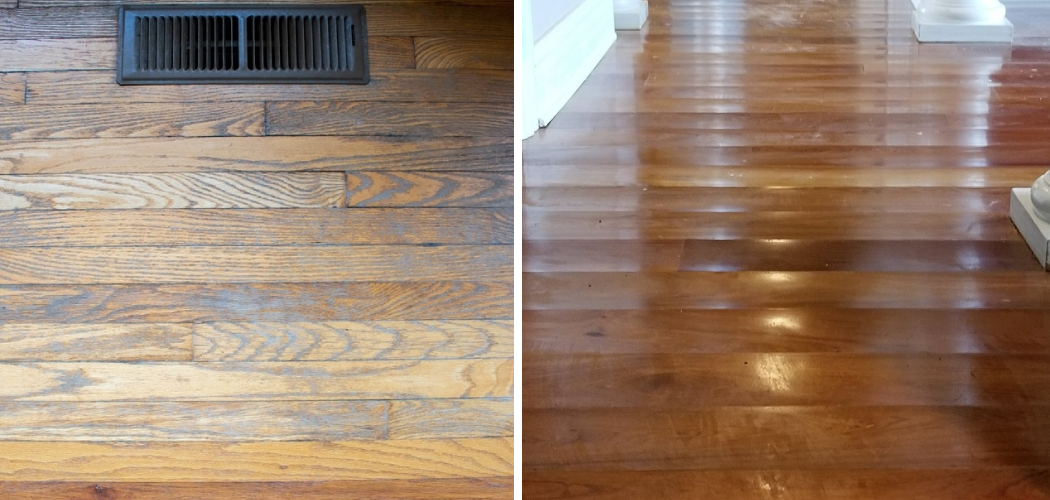Nothing spoils the beauty of a hardwood floor like moisture. Whether it comes from pets, spilled drinks, or an influx of humidity in your home, moisture can cause warping and staining that permanently damages your floors. Moisture can be your hardwood floor’s worst enemy, causing it to warp, buckle and discolor.
It can also provide the perfect environment for mold and mildew growth, making it a very unpleasant situation. So, if you find yourself faced with moisture-ridden floors due to flooding or humidity problems in your home, you’ll need to act quickly and decisively so that your beautiful hardwood floors don’t suffer permanent damage.
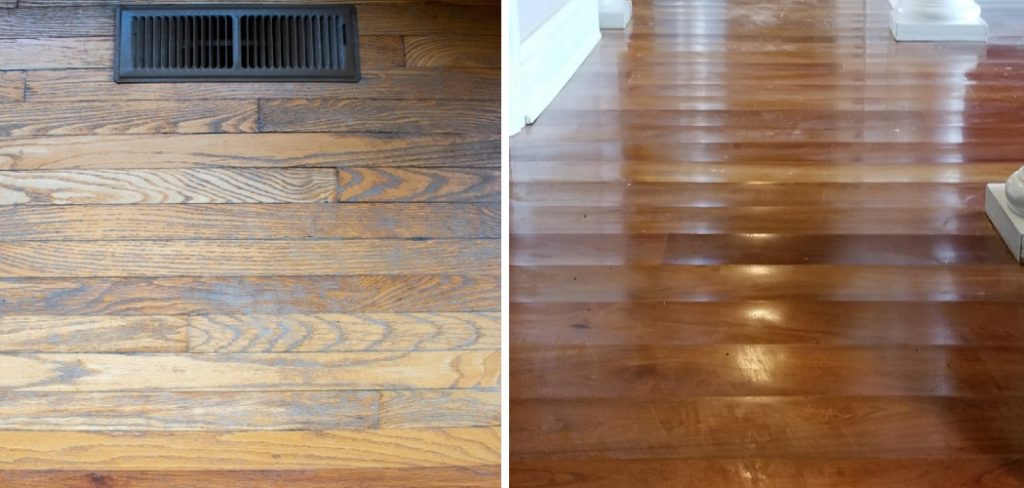
Here is everything you need to know about how to get moisture out of hardwood floors so that they look great again!
Why Do You Need to Get Moisture Out of Hardwood Floors?
1. To Prevent Damage
Moisture causes hardwood floors to swell and buckle, which can lead to permanent damage. It also encourages the growth of mold and mildew, creating an unsanitary environment in your home. Another consequence of moisture trapped in hardwood floors is that it increases the risk of rot, weakening the integrity of the flooring material over time.
The most effective way to prevent all these issues is to keep your hardwood floors as dry as possible.
2. To Maintain Appearance
Moisture can also discolor hardwood, resulting in unsightly stains on your flooring that detract from its beauty. The longer moisture remains trapped in the wood, the deeper and more permanent these stains will be.
By quickly and efficiently removing moisture from your hardwood floors, you can prevent the formation of ugly stains that would otherwise ruin the look of your home.
Required Items
Before you start, it’s important to assemble the necessary items so that you can quickly and effectively get moisture out of your hardwood floors. Here is a list of the items you will need:
- Water vacuum (also known as a wet/dry vac)
- Fans
- Dehumidifier
- Broom
- Mop
- Towels
- Wood floor cleaner
- Felt pads
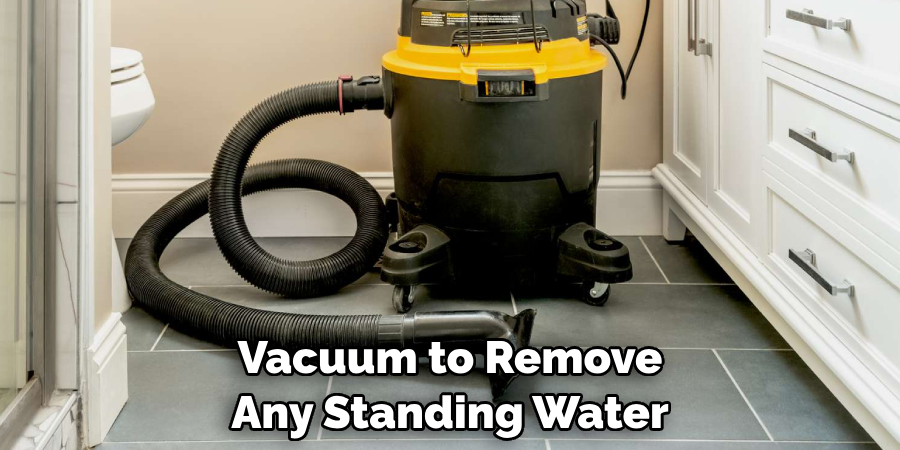
How to Get Moisture Out of Hardwood Floors in 10 Steps
Now that you have the necessary items, here are the steps to follow:
Step 1: Vacuuming
Use your vacuum to remove any standing water on the floor. If there is a lot of water, focus the vacuum on the edges first and then move to the center. Be sure to use a wet/dry vacuum for this step since it will be able to effectively suck up large amounts of water.
Step 2: Fans
Once you’ve removed all standing water with your vacuum, set up fans in the affected area and turn them on high speed. This will help to speed up the drying process by circulating air around the room.
Step 3: Dehumidifier
A dehumidifier can also be used to help get moisture out of hardwood floors. Place the unit in the affected area and let it run until all excess moisture has been removed from the room.

Step 4: Broom and Mop
Once the area has been vacuumed and dried, use a broom to sweep away any dirt or debris from the floor. Then mop the area with warm water and wood floor cleaner to remove any residue left behind by the water. Be sure not to leave standing water on the floor, as this can cause further damage.
Step 5: Towels
Once you’ve finished mopping the floor, use towels to dry up any remaining moisture. Focus on areas where there may be standing water or damp spots. Be sure to wring out the towels before placing them on the floor as this will help absorb the moisture more quickly.
Step 6: Felt Pads
Place felt pads under any furniture that is in the affected area to prevent it from absorbing moisture. This will also help to protect your flooring from further damage.
Step 7: Monitor Humidity Levels
Monitor humidity levels in the room for a few days after you have finished drying out the area. If the humidity levels remain high, you may need to repeat some of the steps outlined above to get moisture out of hardwood floors completely.
Step 8: Replace Damaged Boards
If any boards have been badly warped or discolored due to excess moisture, you may need to replace them in order for your flooring to look its best.
Step 9: Avoid Future Moisture Damage
Now that your flooring is back in good condition, take steps to ensure that moisture doesn’t damage it again. Keep furniture away from windows and exterior walls that can cause condensation on the flooring. Monitor humidity levels in the home to make sure they remain within a safe range.
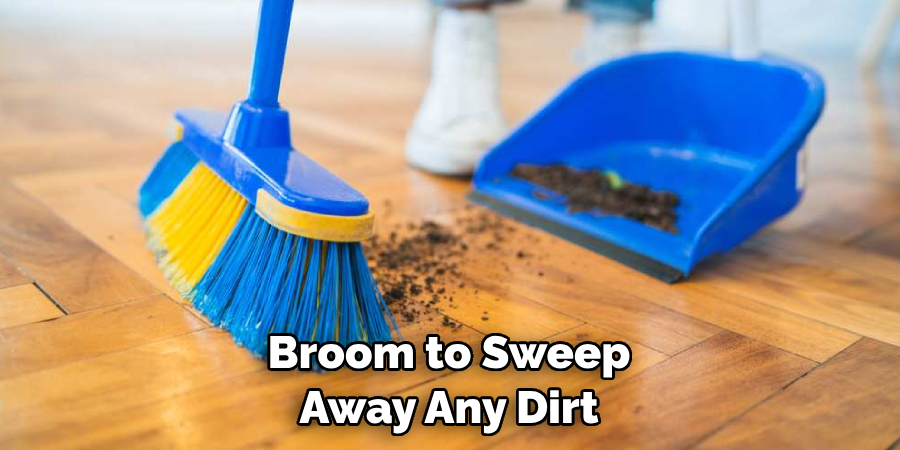
Step 10: Clean Regularly
Finally, make sure to clean your hardwood floors regularly with a wood floor cleaner in order to prevent the buildup of dirt and grime that can trap moisture. This will keep your floors looking beautiful for years to come.
Following these steps on how to get moisture out of hardwood floors will help you get moisture out of hardwood floors quickly and efficiently, so that you can enjoy your beautiful flooring without worrying about damage. With a bit of effort, you can ensure that your hardwood floors remain in pristine condition for many years to come!
8 Maintenance Tips
- Start by assessing the severity of the moisture problem in your hardwood floors. If it’s a minor issue, you may be able to solve the problem yourself with some basic maintenance tips and tricks.
- Make sure any leaks or excessive moisture sources are identified and fixed before beginning this process.
- Start by cleaning the hardwood floor and removing any excess debris. This includes dirt, dust, sand, and other particles which can trap moisture in the wood.
- Use a damp cloth to clean the floors rather than any type of chemicals or cleaners, as they may cause more harm than good when it comes to getting rid of moisture on hardwood floors.
- Consider using a dehumidifier in the room to help reduce the overall moisture levels in your home.
- If you have access to fans, use them to help circulate air around the hardwood floors and promote evaporation of any excess moisture. Using a fan to help reduce the moisture in the air is a great way to make sure the floor stays dry.
- If you’re dealing with a more extreme case of moisture on your hardwood floors, it may be worth hiring a professional who specializes in this area. They’ll have access to special tools and techniques that can help remove any excess moisture from the wood safely and effectively.
- After any moisture-related repair or maintenance work has been completed, be sure to keep the hardwood floors clean and dry on a regular basis. This includes wiping up any spills quickly and vacuuming or sweeping away dirt and debris that can trap moisture in the wood. Taking these steps regularly will help you maintain healthy and attractive hardwood floors for years to come.
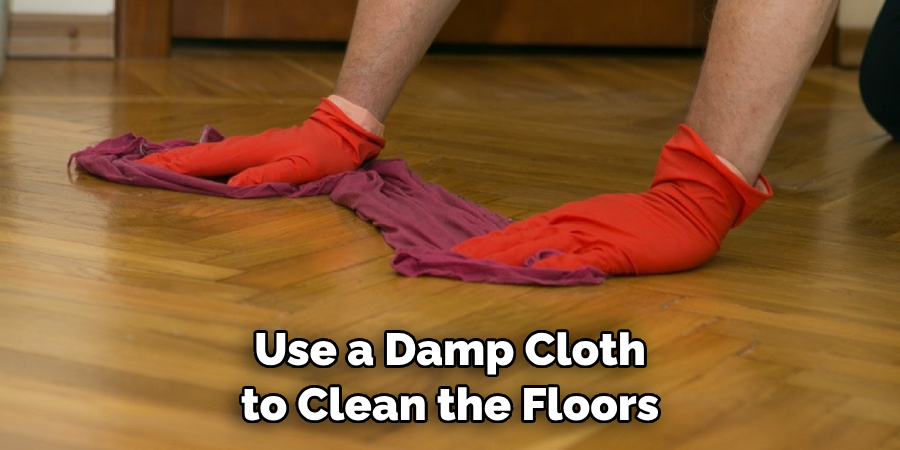
6 Benefits of Getting Moisture Out of Hardwood Floors
Hardwood floors are a popular choice for many homeowners, but they can be quite vulnerable to moisture damage. When water is allowed to remain on hardwood, it causes swelling and warping of the wood, which can lead to an expensive repair. Fortunately, there are several ways to get moisture out of hardwood floors before any permanent damage occurs. Here are five benefits you will enjoy once you have successfully removed moisture from hardwood.
- The most obvious benefit of getting moisture out of your hardwood floors is that it will save you from having to pay for expensive repairs due to water damage. This is especially important if you live in an area with a lot of precipitation or other sources of water, such as a nearby river or lake.
- Another important benefit of getting moisture out of hardwood floors is that it will help to maintain the look and longevity of your flooring. Moisture can cause discoloration, warping, and cracking over time, which will significantly reduce the life span of your flooring. Removing any standing water before it has a chance to cause permanent damage will help your hardwood floor look great for many years.
- When you get moisture out of hardwood floors, it also helps to prevent the growth of mold and mildew, which can be a health hazard in your home. Mold spores can spread through the air and can cause respiratory problems if inhaled or touched directly.
- Removing moisture from hardwood can also help to prevent the growth of insects that are attracted to standing water. Insects like termites and carpenter ants will cause significant damage and can be very difficult to get rid of if they become established in your home.
- Lastly, getting moisture out of hardwood floors can help to reduce energy costs as it will keep your home cooler in the summer and warmer in the winter. Moisture can act as an insulator, which will prevent your home from properly regulating its temperature, leading to higher energy costs.
- Finally, getting moisture out of your hardwood floors can help to improve the air quality in your home by reducing the amount of allergens and dust that can become trapped in wet wood. Moisture is a breeding ground for bacteria and fungi, which can cause allergic reactions in those who are sensitive to them.
By taking proactive steps on how to get moisture out of hardwood floors to get moisture out of hardwood floors, you can save yourself time, money, and hassle and keep your floor looking great for years to come. Regularly check for any standing water or moisture and use a dehumidifier to help maintain optimal humidity levels. Doing so will ensure that your hardwood floors remain in top condition for many years!
For more stubborn cases of moisture damage, there are a few other methods you can try, such as using fans to speed up the drying process and applying a commercial wood sealant to protect against future damage. However, it is always best to remove any standing water or moisture as soon as possible in order to prevent long-term damage.
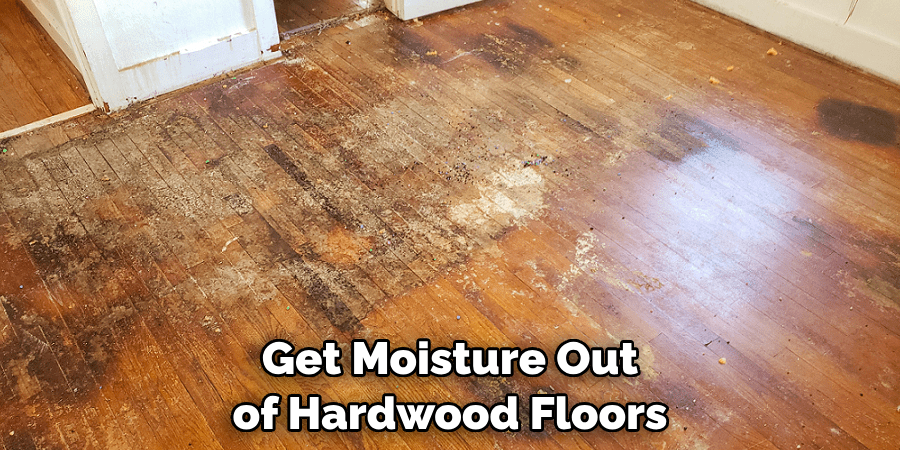
With the right tools and techniques, getting moisture out of hardwood floors doesn’t have to be a difficult process. Regularly monitoring your flooring for any signs of damage will ensure it remains in top condition for years to come!
Conclusion
In conclusion, learning how to get moisture out of hardwood floors is an essential skill for every homeowner. Although it can sometimes be a daunting task, you can make it much easier and quicker by following a few easy steps. Start by determining the source of the moisture and addressing it swiftly, or else the damage could become irreversible.
Once that’s taken care of, use a dehumidifier and fan to dry out the hardwood floor as quickly as possible. Finally, ensure any furniture or decorations in the space are blocking airflow and preventing floor drying properly. Ultimately, these few measures will help you make sure your hardwood floors stay in top condition for years to come!
